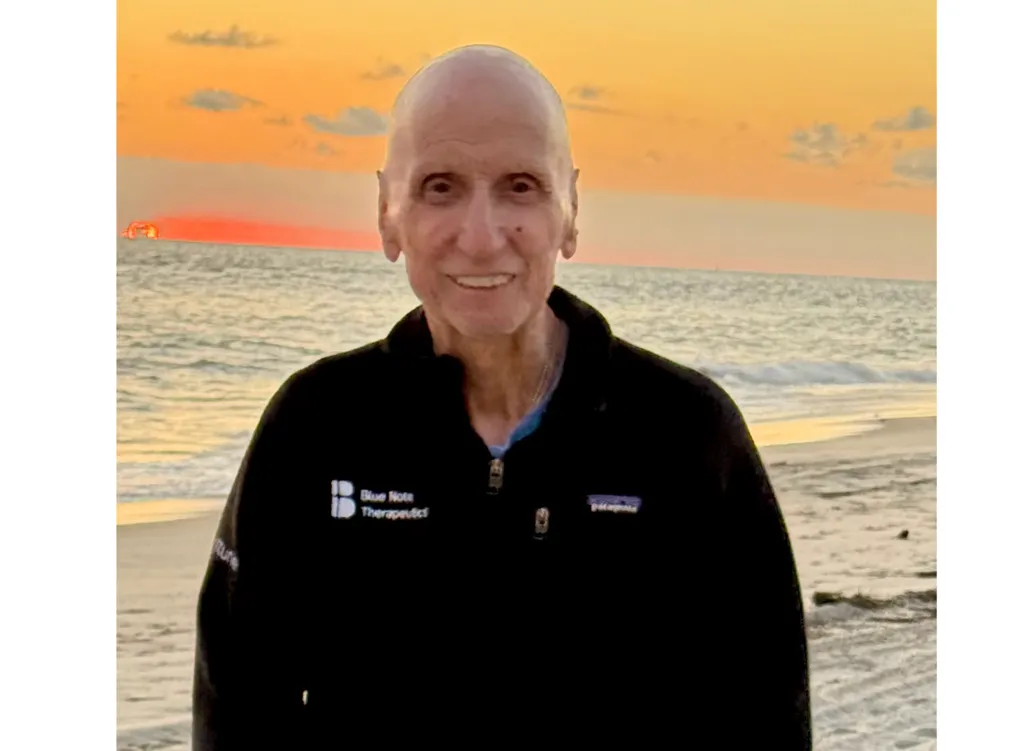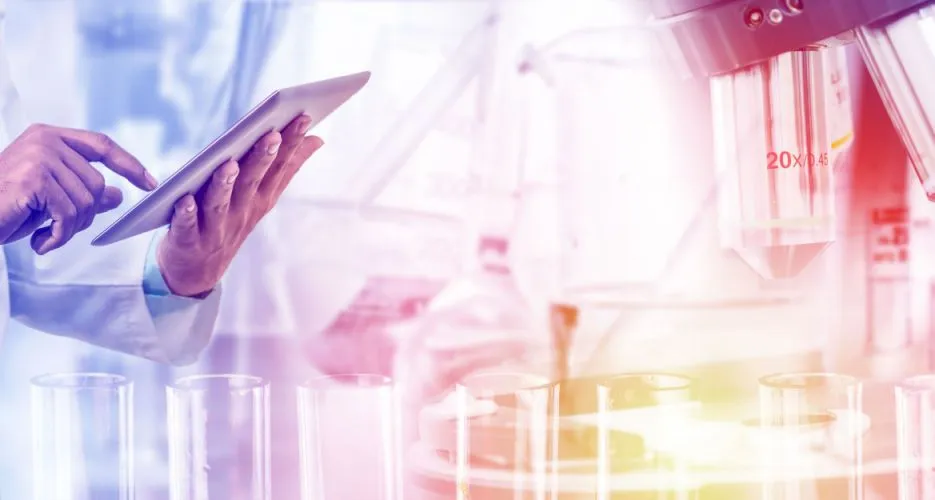AML Survivorship: Challenges and Opportunities

AML specialist Dr. Nandita Khera from the Mayo Clinic in Arizona shared with us her insights into challenges and opportunities in AML survivorship. Watch her full presentation below or read the summary of the event.
Event Summary
While AML is a challenging disease, advances in treatment and a shift towards personalized care have improved survival rates. However, the diverse challenges faced by patients and their caregivers during their journey highlight the need for holistic, patient-centric care that addresses both medical and psychosocial aspects of the disease.
AML Overview
AML is a rare and difficult-to-treat cancer, with a low survival rate. In 2019, AML cases represented about 1.2% of all cancer diagnoses, with roughly 21,000 new cases. The average diagnosis age is 68, but infants can also be affected. Almost half of those diagnosed pass away from the disease. The 5-year survival rate has improved to 28%.
Positive Trends in Treatment
Treatment for AML has seen positive trends, with data from a Swedish registry indicating improved survival and reduced relapse from 2000-2014, particularly for patients under 60. While older patients also saw benefits, they were less pronounced. In the past, AML treatment primarily involved chemotherapy. There are now a wider variety of mutation-based treatments. Post-2014, the AML treatment landscape evolved considerably with the introduction of new agents and advanced tests that identify specific AML cell mutations, allowing for more personalized treatments. The rapid progression in AML treatments hints at even more effective options in the near future, potentially enhancing patient survival rates.
Survivorship Care
In modern medicine, "survivorship" for cancer patients starts at the point of diagnosis, not just post-treatment. Emphasizing survivorship care is vital because it focuses on side effects, monitors for other cancers, and supports caregivers. Current insights on AML survivorship primarily stem from studies on hematopoietic stem cell transplants, the main treatment offering a potential cure for AML.
Physical Effects
Treatments for AML can result in various physical effects, including organ dysfunction (impacting kidneys, heart, and lungs) and potential growth issues in younger patients. These treatments can also hasten aging, lead to infertility, sexual difficulties, and raise the risk for secondary cancers. Patients are at an increased risk for infections due to a weakened immune system, a recurrence of AML, and may experience fatigue, pain, sleep disturbances, and chronic GVHD post-transplant.
Psychosocial Sequela
Post-treatment effects can be categorized into physical, psychological, and social. Physically, patients might experience fatigue, pain, fertility issues, and disability. Psychologically, they may face depression, anxiety, stress, poor coping mechanisms, and cognitive issues known as "chemo brain." Socially, challenges can arise in financial matters, societal reintegration, returning to work, and relationship problems.
Addressing Late Complications
Late complications in patients can be influenced by factors related to the disease, treatment, social demographics, clinical traits, and psychosocial and work-related elements. Individual risks vary among patients based on their specific treatments and personal circumstances. To address these late effects, a three-tiered approach is proposed:
- Primary Prevention aims at promoting a healthier lifestyle, raising awareness, and tackling risk factors
- Secondary Prevention emphasizes regular screenings, early interventions, and managing associated medical conditions
- Tertiary Prevention focuses on rehabilitation, enhancing life quality, and minimizing mortality risks
Screening and Evaluation
Transplant patients follow particular evaluation guidelines. They undergo yearly thorough check-ups, including tests for cholesterol, fasting glucose, echocardiogram, and EKG. Given the potential heart impacts of certain chemotherapies, some patients receive stress tests. Due to skin cancer risks, annual dermatological assessments are advised. Additionally, tools screen for emotional well-being, specifically for anxiety, depression, and distress.
Risk Modification and Primary Prevention
For optimal health, it's recommended to avoid smoking and excessive alcohol, maintain a low-fat diet, remain active, and limit sun exposure. Regular medical screenings like mammograms, pap smears, and colonoscopies are vital. Post-transplant, vaccinations are crucial, and managing other health conditions, such as heart or kidney diseases, is essential.
Psychosocial Care
Screening for, and addressing, anxiety and depression are crucial for a patient's well-being. Recommended treatments include exercise, psychotherapy, neuropsychological assessments, and integrative therapies such as yoga and meditation. A study used digital storytelling videos to help patients cope with emotional challenges after a transplant.
Survivorship Care
Barriers to optimal AML care exist at various levels. Patients face issues like unawareness and socioeconomic challenges. Providers often lack necessary resources and overly focus on initial treatments. The broader system grapples with reimbursement problems, poor coordination, and a lack of emphasis on long-term results. However, despite the barriers, the AML treatment landscape is evolving positively, with new treatments emphasizing improved life quality. While survivorship rates are increasing, challenges persist, such as the need for evidence-based care, understanding treatment aftereffects, refining care models, and enhancing awareness.
Want to Learn More About Important AML Topics?
AML specialist Dr. Nandita Khera from the Mayo Clinic in Arizona shared with us her insights into challenges and opportunities in AML survivorship. Watch her full presentation below or read the summary of the event.
Event Summary
While AML is a challenging disease, advances in treatment and a shift towards personalized care have improved survival rates. However, the diverse challenges faced by patients and their caregivers during their journey highlight the need for holistic, patient-centric care that addresses both medical and psychosocial aspects of the disease.
AML Overview
AML is a rare and difficult-to-treat cancer, with a low survival rate. In 2019, AML cases represented about 1.2% of all cancer diagnoses, with roughly 21,000 new cases. The average diagnosis age is 68, but infants can also be affected. Almost half of those diagnosed pass away from the disease. The 5-year survival rate has improved to 28%.
Positive Trends in Treatment
Treatment for AML has seen positive trends, with data from a Swedish registry indicating improved survival and reduced relapse from 2000-2014, particularly for patients under 60. While older patients also saw benefits, they were less pronounced. In the past, AML treatment primarily involved chemotherapy. There are now a wider variety of mutation-based treatments. Post-2014, the AML treatment landscape evolved considerably with the introduction of new agents and advanced tests that identify specific AML cell mutations, allowing for more personalized treatments. The rapid progression in AML treatments hints at even more effective options in the near future, potentially enhancing patient survival rates.
Survivorship Care
In modern medicine, "survivorship" for cancer patients starts at the point of diagnosis, not just post-treatment. Emphasizing survivorship care is vital because it focuses on side effects, monitors for other cancers, and supports caregivers. Current insights on AML survivorship primarily stem from studies on hematopoietic stem cell transplants, the main treatment offering a potential cure for AML.
Physical Effects
Treatments for AML can result in various physical effects, including organ dysfunction (impacting kidneys, heart, and lungs) and potential growth issues in younger patients. These treatments can also hasten aging, lead to infertility, sexual difficulties, and raise the risk for secondary cancers. Patients are at an increased risk for infections due to a weakened immune system, a recurrence of AML, and may experience fatigue, pain, sleep disturbances, and chronic GVHD post-transplant.
Psychosocial Sequela
Post-treatment effects can be categorized into physical, psychological, and social. Physically, patients might experience fatigue, pain, fertility issues, and disability. Psychologically, they may face depression, anxiety, stress, poor coping mechanisms, and cognitive issues known as "chemo brain." Socially, challenges can arise in financial matters, societal reintegration, returning to work, and relationship problems.
Addressing Late Complications
Late complications in patients can be influenced by factors related to the disease, treatment, social demographics, clinical traits, and psychosocial and work-related elements. Individual risks vary among patients based on their specific treatments and personal circumstances. To address these late effects, a three-tiered approach is proposed:
- Primary Prevention aims at promoting a healthier lifestyle, raising awareness, and tackling risk factors
- Secondary Prevention emphasizes regular screenings, early interventions, and managing associated medical conditions
- Tertiary Prevention focuses on rehabilitation, enhancing life quality, and minimizing mortality risks
Screening and Evaluation
Transplant patients follow particular evaluation guidelines. They undergo yearly thorough check-ups, including tests for cholesterol, fasting glucose, echocardiogram, and EKG. Given the potential heart impacts of certain chemotherapies, some patients receive stress tests. Due to skin cancer risks, annual dermatological assessments are advised. Additionally, tools screen for emotional well-being, specifically for anxiety, depression, and distress.
Risk Modification and Primary Prevention
For optimal health, it's recommended to avoid smoking and excessive alcohol, maintain a low-fat diet, remain active, and limit sun exposure. Regular medical screenings like mammograms, pap smears, and colonoscopies are vital. Post-transplant, vaccinations are crucial, and managing other health conditions, such as heart or kidney diseases, is essential.
Psychosocial Care
Screening for, and addressing, anxiety and depression are crucial for a patient's well-being. Recommended treatments include exercise, psychotherapy, neuropsychological assessments, and integrative therapies such as yoga and meditation. A study used digital storytelling videos to help patients cope with emotional challenges after a transplant.
Survivorship Care
Barriers to optimal AML care exist at various levels. Patients face issues like unawareness and socioeconomic challenges. Providers often lack necessary resources and overly focus on initial treatments. The broader system grapples with reimbursement problems, poor coordination, and a lack of emphasis on long-term results. However, despite the barriers, the AML treatment landscape is evolving positively, with new treatments emphasizing improved life quality. While survivorship rates are increasing, challenges persist, such as the need for evidence-based care, understanding treatment aftereffects, refining care models, and enhancing awareness.
Want to Learn More About Important AML Topics?

about the author
Megan Heaps
Megan joined HealthTree in 2022. She enjoys helping patients and their care partners understand the various aspects of the cancer. This understanding enables them to better advocate for themselves and improve their treatment outcomes.
More on Navigating Your Health
Trending Articles

Get the Latest Acute Myeloid Leukemia Updates, Delivered to You.
By subscribing to the HealthTree newsletter, you'll receive the latest research, treatment updates, and expert insights to help you navigate your health.










